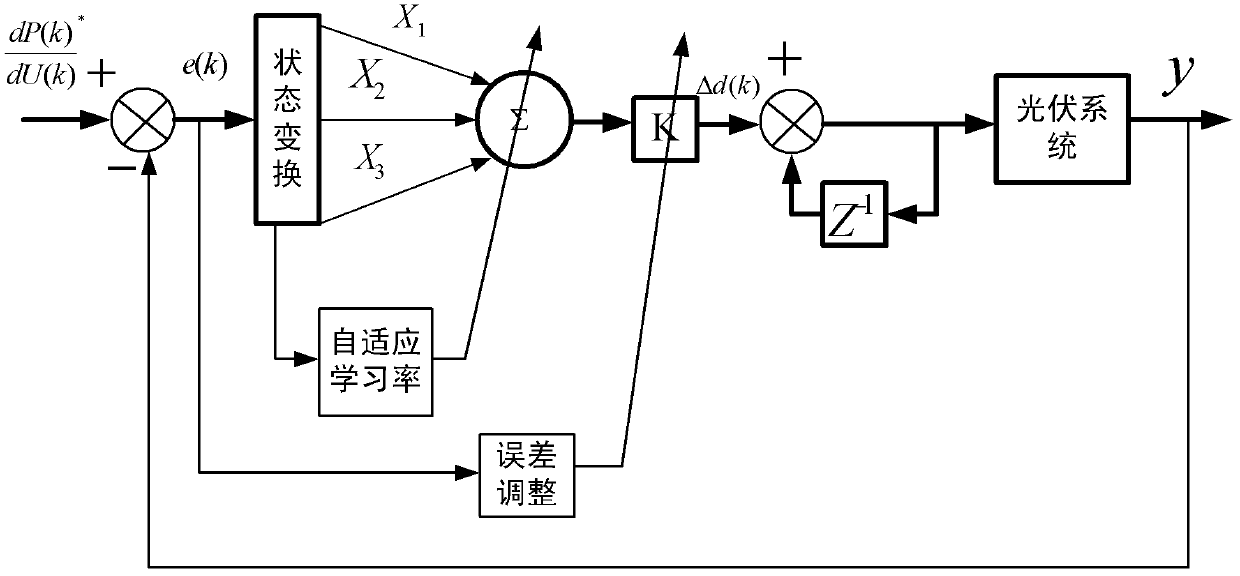Maximum power point tracking method for photovoltaic power system
A photovoltaic power generation system and maximum power point technology, which is applied in photovoltaic power generation, light radiation generators, control/regulation systems, etc., can solve problems such as poor adaptability, slow response speed, and low detection accuracy, and achieve rapid adaptation to changes in the working environment , Reduce system oscillation, improve speed and stabilize the effect of precision
- Summary
- Abstract
- Description
- Claims
- Application Information
AI Technical Summary
Problems solved by technology
Method used
Image
Examples
Embodiment Construction
[0014] Below in conjunction with accompanying drawing, technical content of the present invention is described:
[0015] Such as figure 1 As shown, in the photovoltaic power generation system, the relationship between the output power, voltage and current of photovoltaic cells is: P=U*I , Under normal working conditions, the power voltage curve of photovoltaic cells is a single convex peak shape, and there is only one maximum power point. When the photovoltaic system works at the maximum power point, the slope =0; at the left of the maximum power point >0, at the right of the maximum power point =0, the supervised Hebb learning rule is used to adaptively adjust the weight coefficient, and the error is adjusted online K The single-neuron self-adaptive PID control algorithm realizes the maximum power point tracking of the photovoltaic power generation system.
[0016] The single-neuron adaptive controller realizes self-adaptation and self-organization functions through...
PUM
 Login to View More
Login to View More Abstract
Description
Claims
Application Information
 Login to View More
Login to View More - R&D
- Intellectual Property
- Life Sciences
- Materials
- Tech Scout
- Unparalleled Data Quality
- Higher Quality Content
- 60% Fewer Hallucinations
Browse by: Latest US Patents, China's latest patents, Technical Efficacy Thesaurus, Application Domain, Technology Topic, Popular Technical Reports.
© 2025 PatSnap. All rights reserved.Legal|Privacy policy|Modern Slavery Act Transparency Statement|Sitemap|About US| Contact US: help@patsnap.com



